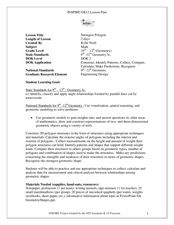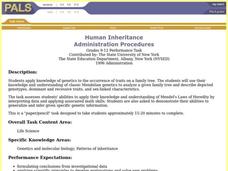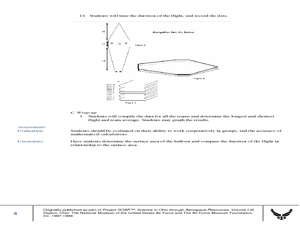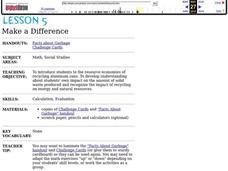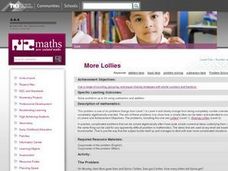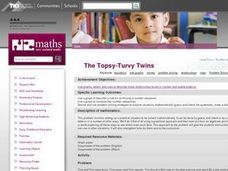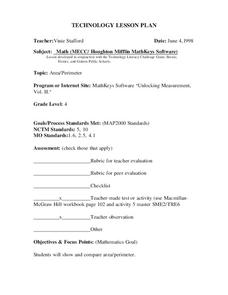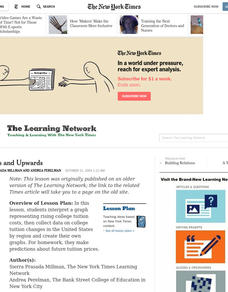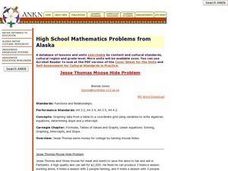Curated OER
Strongest Polygon
Students define and identify shapes by name. In this geometry lesson, students construct, identify and compare polygons based on the number of sides. They classify each shape based on their angle sum theorem.
Curated OER
Geometry: Classifying Angles
Students measure, construct, and classify angles as acute, right, straight, and obtuse. Once they have completed an angle worksheet, students use a map of South Carolina to locate cities by constructing the aforementioned angles.
Curated OER
Alternative Alphabet
Students determine and compare hieroglyph content and frequency to sentences constructed in an alternative alphabet based on symbols that mimic sounds of the alphabet. They decide which images are hieroglyphs and which ones are not.
Curated OER
Take a Chance
Students explore possible outcomes and impossible events. They determine if an event is likely or unlikely. Students investigate the possible outcomes of events and they record the outcomes. Students discuss their answers and use...
Curated OER
Quadratic Equations
Tenth graders review algebraic methods of solving quadratic equations. Students discuss several methods of solving quadratic equations. They practice factoring and finding the roots of an equation for solving. A calculator is used to...
Curated OER
Unit Perimeters and Areas
Learners use Geometers SketchPad to find the area and perimeter of several shapes. In this geometry lesson, students determine area of rectangles and progress through irregular polygons. None of the referenced worksheets are included...
Curated OER
Symmetries of Strip Patterns
Students study strip patterns and identify symmetry. They create a paper doll chain. They experiment with different shapes. They determine if their chain is a strip pattern. They create snowflakes with triangles.
Curated OER
Human Inheritance
Students analyze genetic characteristics in a given family tree through the F2 generation. Students apply prior knowledge from Gregor Mendel's study with pea plants and his Laws of Heredity to answer questions.
Curated OER
Terrific Tessellations
Students create to pieces of artwork using two primary colors and tessellation techniques. This is an excellent lesson that can be accomplished using standard art techniques or educational software such as Adobe Photoshop or Microsoft...
Curated OER
Up, Up and Away with the Montgolfier Balloon
Students construct hot air balloons. In this science lesson, students assemble their own balloon using tissue paper and glue. They time the duration of the flight, record data and calculate team averages.
Curated OER
Teaching the Tr'panier Trapezoid Kite
Learners analyze how the parts of a system go together and how these parts depend on each other. They comprehend the forces in terms of strength and direction. Students observe, measure and describe weather indicators.
Curated OER
Make a Difference
Students are introduced to the resource economies of recycling aluminum cans. They develop understanding about their own impact on the amount of solid waste produced and recognize the impact of recycling on energy and natural resources.
Curated OER
Teaching the Toki Kaku Dako
Students complete various readings and decorating, constructing, and flying a kite. They analyze how the parts of a system to together. Students comprehend the concept of area.
Curated OER
Mini-Economy
Third graders perform jobs in order to sustain their classroom community. After completing a brief overview of how local economies are sustained, they complete job applications for classroom jobs. Students perform their jobs throughout...
Curated OER
Patterns, Relations And Functions
Fourth graders observe patterns and determine a mathematical function that creates the pattern. Through a demonstration by the teacher, they observe strategies such as multiplication, division, addition, and subtraction to use when...
Curated OER
Choices
This unit is about making calculations in the real life situations of taxis, hire cars, and cell phones. They find and justify a word formula which represents a given practical situation. Solve simple linear equations such as 2? + 4 = 16.
Curated OER
More Lollies
Students review the days of the week and see if the students can recite he sequence using different starting days. Students retell the problem using their own words to check that everyone examines.
Curated OER
The Topsy-Turvy Twins
Fourth graders read the problem and brainstorm for ways to solve the problem - list these on the board for the students to refer to as they solve the problem. They work in pairs and focus on the strategy selected.
Curated OER
Fourths of Sets
Students create a set of cards that represent factors of four and use these cards to play a game in which they practice separating numbers into fourths. They first practice separating numbers into fourths with a projected computer...
Curated OER
Area And Perimeter
Fourth graders investigate the concepts of area and perimeter, and they practice finding the values in various types of situations. They construct different representations of shapes using the area measurements and also explain the...
Curated OER
Trash Pizza
Students identify items commonly sent to landfills and summarize percentages/fractions of different items in landfills Students create a pizza pie graph of landfill components
Curated OER
Onwards and Upwards
Students analyze a graph representing college tuition increases, consider the possible causes and consequences of these tuition increases and collect data on tuition changes at colleges in the United States by region and graph the data.
Curated OER
High School Mathematics Problems from Alaska: Jesse Thomas Moose Hide Problem
Students solve problems about a student earning money for college by tanning moose hides.
Curated OER
String of Fish
Fourth graders research a Florida fish to determine its length. They display this information on two index cards, which are cut to the shape of the head and the tail and attached to a string that they measure and cut to the correct...


